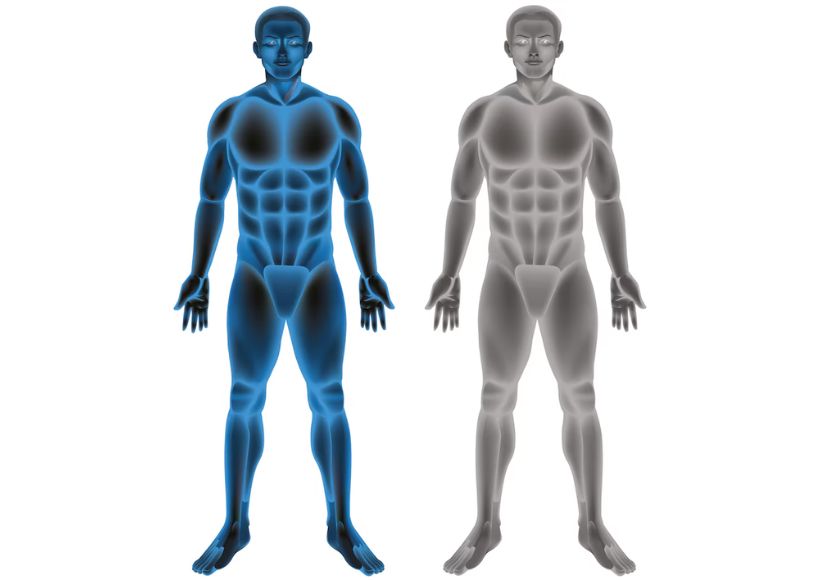Decoding Your Body Composition: Understanding the Key Metrics for Effective Weight Management
Welcome to “Decoding Your Body Composition,” where we unravel the mysteries and its crucial role in effective weight management. While weight is commonly used as a measure of health and fitness, it doesn’t tell the whole story. Body composition, which refers to the proportion of fat, muscle, bone, and other tissues in the body, provides a more comprehensive view of overall health. In this blog, we’ll explore the key metrics of body composition, discuss their significance in weight management, and provide practical strategies for optimizing body composition for improved health and well-being.
Understanding the topic:
Body composition is a term used to describe the percentage of fat, muscle, bone, and other tissues in the body. It is an important indicator of overall health and fitness, as different components of body composition have distinct implications for health outcomes. Common methods for assessing body composition include bioelectrical impedance analysis (BIA), dual-energy X-ray absorptiometry (DEXA), skinfold measurements, and waist circumference.
Key Metrics:
Understanding the key metrics of body composition is essential for effective weight management. Here are the primary metrics to consider:
- Body Fat Percentage: Body fat percentage refers to the proportion of total body weight that is comprised of fat tissue. A healthy body fat percentage varies depending on factors such as age, gender, and fitness level. Higher body fat percentages are associated with an increased risk of chronic diseases, such as heart disease, diabetes, and certain cancers.
- Lean Body Mass: Lean body mass includes all non-fat components of the body, such as muscle, bone, organs, and fluids. It is an important determinant of metabolic rate, as muscle tissue burns more calories at rest than fat tissue. Increasing lean body mass through resistance training and adequate protein intake can help boost metabolism and support weight management efforts.
- Visceral Fat: Visceral fat refers to the fat stored within the abdominal cavity, surrounding vital organs such as the liver, pancreas, and intestines. Excess visceral fat is associated with an increased risk of metabolic syndrome, insulin resistance, and cardiovascular disease. Monitoring visceral fat levels can help assess abdominal obesity and guide interventions to reduce health risks.
- Waist-to-Hip Ratio (WHR): The waist-to-hip ratio is a measure of fat distribution that compares the circumference of the waist to the circumference of the hips. A high WHR is indicative of abdominal obesity and is associated with an increased risk of chronic diseases, including cardiovascular disease and type 2 diabetes.
Significance of Body Composition in Weight Management:
Body composition plays a critical role in weight management and overall health. Here’s why it matters:
- Health Risks: Excess body fat, particularly visceral fat, is associated with an increased risk of chronic diseases, including heart disease, diabetes, and certain cancers. Monitoring body composition can help identify individuals at risk and guide interventions to reduce health risks.
- Metabolic Health: Body composition influences metabolic rate, energy expenditure, and nutrient partitioning. Optimizing body composition by reducing body fat and increasing lean body mass can improve metabolic health, insulin sensitivity, and overall metabolic function.
- Fitness Goals: Body composition is an important determinant of fitness and athletic performance. Achieving a healthy body composition, with an appropriate balance of fat and muscle mass, can enhance strength, endurance, and physical performance.
- Weight Management: Body composition provides valuable insights into the effectiveness of weight management strategies. Focusing on improving body composition, rather than solely targeting weight loss, can lead to better long-term outcomes and improved overall health.
Practical Strategies for Optimizing Body Composition:
Below are some practical strategies for optimizing body composition for improved health and well-being:
Strength Training: Incorporate resistance training exercises into your workout routine to build lean muscle mass, increase metabolism, and improve body composition.
Cardiovascular Exercise: Include aerobic activities such as running, cycling, or swimming to burn calories, reduce body fat, and improve cardiovascular health.
Balanced Diet: Follow a balanced diet rich in whole, nutrient-dense foods such as fruits, vegetables, lean proteins, whole grains, and healthy fats to support muscle growth, fat loss, and overall health.
Portion Control: Practice portion control and mindful eating to manage calorie intake, prevent overeating, and support weight management efforts.
Monitor Progress: Regularly assess your body composition using reliable methods such as BIA, DEXA, or waist circumference measurements to track progress and adjust your approach as needed.
Here are some statistics and data to support the points made in the blog, along with links to the sources for further reading:
Health Risks Associated with Excess Body Fat:
According to research published in the journal Circulation, excess body fat, particularly visceral fat, is associated with an increased risk of cardiovascular disease, diabetes, and certain cancers.
Impact of Lean Body Mass on Metabolic Health:
A study published in the American Journal of Clinical Nutrition found that increasing lean body mass through resistance training is associated with improvements in metabolic health, including insulin sensitivity and glucose metabolism.
Relationship Between Waist-to-Hip Ratio and Health Risks:
Research published in the British Journal of Nutrition suggests that waist-to-hip ratio is a better predictor of health risks, such as cardiovascular disease and type 2 diabetes, than body mass index (BMI) alone.
Effectiveness of Strength Training in Improving Body Composition:
According to a meta-analysis published in the journal Obesity Reviews, strength training exercises, such as resistance training, are effective for increasing lean body mass, reducing body fat percentage, and improving overall body composition.
Role of Cardiovascular Exercise in Weight Management:
Research published in the Journal of Obesity suggests that aerobic exercise, such as running or cycling, is effective for reducing body fat, improving cardiovascular health, and promoting weight management.
These statistics provide valuable insights into the relationship between body composition and health outcomes, the impact of lean body mass on metabolic health, the significance of waist-to-hip ratio as a predictor of health risks, and the effectiveness of strength training and cardiovascular exercise in optimizing body composition. Feel free to explore the provided sources for more in-depth information on each topic.
Conclusion:
In conclusion, understanding your body composition is key to effective weight management and overall health. By monitoring key metrics such as body fat percentage, lean body mass, visceral fat, and waist-to-hip ratio, you can gain valuable insights into your health status and make informed decisions about diet, exercise, and lifestyle. By optimizing body composition through a combination of strength training, cardiovascular exercise, balanced nutrition, portion control, and regular monitoring, you can achieve your health and fitness goals and enjoy a healthier, happier life.
We at Politisay aim to give you as much information as possible on Health and Health Management. We have written a couple of more blogs (Behavior modification, Calorie Counting) on weight management, and there are more to come. Do check these when you have time. 🙂


